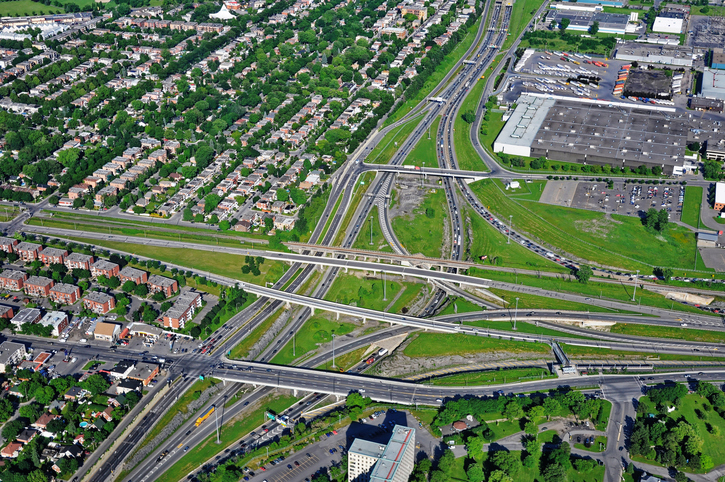Wednesday, July 2, 2025
By Brent Loney
When the Province of Ontario enacted Ontario Regulation 406/19 (On-Site and Excess Soil Management), the goal was to solve a long-standing and significant problem: preventing contaminated soils from being managed inappropriately. This problem certainly needed to be addressed, but the solution has created its own set of problems. Is this a case of “the cure being worse than the disease”?
This article focuses on one aspect of the regulation that is particularly salient to this question: the very conservative nature of the Excess Soil Quality Standards (ESQS). This is important because there is, not surprisingly, a direct correlation between how low soil quality standards are and how much soil will be classified as contaminated. Particularly in the context of excess soils, both the costs and the benefits of this relationship become an important public policy consideration.
The province already had a set of soil quality standards that were broadly applied in the assessment of soil quality: the Ontario Regulation 153/04 Standards, otherwise known as the “Brownfield soil standards.” But because it was recognized that significantly larger volumes of soil would often be deposited at soil reuse sites than the default volumes assumed in the derivation of the brownfield standards, there was a concern that this larger contaminant loading might have greater impacts to the environment. Consequently, new and more conservative standards were developed to take this into account; for example, the ESQS, with most of these values being significantly lower than the already conservative brownfield standards.
But was this extra level of caution and conservatism necessary? Arguably it was not. There are two main lines of reasoning for this.
Firstly, the brownfield standards already incorporate many conservative assumptions and approaches that have a net effect of making the standards over-protective in most cases, or put differently, they already include significant “safety factors” (even if such factors are not explicitly included in their derivation). This is entirely appropriate when developing generic standards that need to be broadly applicable across the province. But the level of conservatism in this process should not be underestimated. It is not the intent here to fully explore this topic, but a case in point is the conservatism involved in the leaching-based pathways.
Practitioners across the province can attest based on years of experience working with these standards that contaminant leaching does not occur under real world conditions at the rates that would be predicted by the models. Groundwater impacts are instead found at sites where significantly higher source concentrations occur in soil, or where contaminant discharges more directly come into contact with groundwater.
The other (and arguably more important) reason that the development of more conservative ESQS was not necessary revolves around the very different context between excess soils on the one hand, and soils in a Brownfield context on the other hand. Contaminated sites and brownfields by their very nature are expected to have soils impacted by chemical contaminants. When soil quality standards are applied in this context, they can effectively become clean-up standards. It is therefore not an unreasonable expectation that fairly significant volumes of soil could hypothetically occur at such sites, with chemical contaminants present at concentrations at or close to the standard.
However, in an excess soils context, this would rarely be the case. These soils are generated in a construction setting for a multitude of infrastructure and development related projects. In this scenario, contaminant levels can be more variable, but in aggregate, can be expected to be much lower than would be the case in brownfields/contaminated sites (noting too that more heavily impacted soils encountered at these projects would still nevertheless be required to be segregated as contaminated). In other words, the concern relating to greater overall contaminant loading in an excess soils instance is largely mitigated by the fact that the average or typical concentrations will be much lower (i.e., with the lower typical concentrations offsetting the higher potential volumes).
This becomes important when one considers that some level of anthropogenic soil quality impacts are typically encountered very broadly in urban areas (where large volumes of excess soils are produced), often at relatively low levels, but still high enough that more conservative standards can easily be exceeded. The more conservative the standards, the less soil can be reused, with more soil being directed to landfills. The public utility of this dynamic is poor, both in terms of the potential human health and environmental benefit, and the implications in terms of waste management planning.
If the existing brownfield standards had instead simply been applied to the management of excess soils, would this have significantly affected the level of protection to human health and the environment? For the aforementioned reasons, the answer is likely that there was very little if any benefit to the extra conservatism. Theoretically, there may be cases where the extra conservatism may be beneficial, but such cases would likely be very rare. The costs, however, are significant, with these taking the form of greater volumes of soil being considered contaminated (and thus being directed to landfills and unable to be beneficially reused), and higher overall excess soils management costs. It is noted that a large portion of the excess soils being managed across the province are related to public infrastructure projects, with these costs being funded as tax-based expenditures that divert resources from other, and perhaps more pressing public needs.
A re-examination of the ESQS in this light by the Ontario government would be welcome.
 Brent Loney is a partner at Dillon Consulting Limited.
Brent Loney is a partner at Dillon Consulting Limited.
Note: This article initially appeared in the Fall Edition of Environment Journal, available here.
For related news, read:
- “Ontario government proposes amendments to the brownfields regulation,” available here.
- “Ontario government enabling greater beneficial reuse of excess soil,” available here.
Featured image credit: Getty Images











